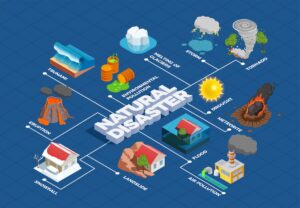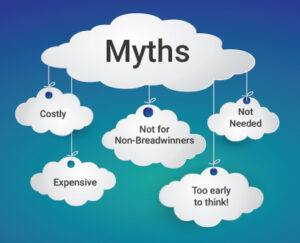Natural disasters remain a constant threat for homeowners across North America. From hurricanes and wildfires to earthquakes, these events can cause significant damage, and without the proper insurance, they can lead to financial ruin. Understanding the various insurance options available and how they apply to different natural disasters is essential for safeguarding your home and assets.
This article provides a comprehensive guide on natural disaster insurance in North America, covering the different types of coverage available, regional differences in policies, and strategies for ensuring you’re adequately protected. We will also highlight relevant keywords related to insurance, loans, and financial protection.
Understanding Natural Disaster Insurance
Insurance for natural disasters offers protection against catastrophic events such as hurricanes, earthquakes, floods, and wildfires. While a standard homeowners insurance policy covers a wide range of risks, it typically does not include coverage for many natural disasters. Special policies or additional endorsements are often required.
Keywords: natural disaster insurance, homeowners insurance, flood insurance, earthquake insurance.
Types of Insurance Coverage for Natural Disasters
When protecting your home from natural disasters, it is crucial to understand the specific types of insurance coverage you may need. In some cases, additional policies or riders are required to cover damage caused by specific types of natural disasters.
- Flood Insurance Flooding is one of the most frequent and destructive natural disasters in North America. However, damage caused by floods is typically not covered by standard homeowners insurance. Homeowners must purchase separate flood insurance to be protected. The Federal Emergency Management Agency (FEMA) provides flood insurance through the National Flood Insurance Program (NFIP), which covers both structural damage and personal property. Private flood insurance options are also available and may offer higher coverage limits.Keywords: flood insurance, FEMA flood insurance, private flood insurance, flood coverage.
- Earthquake Insurance Earthquakes can cause extensive structural damage, but like flooding, they are not typically covered by regular homeowners insurance. Earthquake insurance is available as a separate policy or endorsement and helps pay for repairs to your home and personal property. In regions like California, where seismic activity is common, earthquake insurance is essential. Be sure to review policy limits, deductibles, and exclusions, as these can vary widely.Keywords: earthquake insurance, seismic activity coverage, California earthquake insurance, earthquake damage.
- Hurricane and Windstorm Insurance Hurricanes and windstorms can cause severe damage, especially along coastal areas. While many homeowners insurance policies cover damage from windstorms, some areas with higher risks, such as the Gulf Coast and Eastern Seaboard, require additional windstorm insurance or specific hurricane deductibles. Windstorm insurance covers damage from high winds, including roof damage, broken windows, and fallen trees.Keywords: hurricane insurance, windstorm insurance, coastal home insurance, hurricane deductible.
- Wildfire Insurance Wildfires are increasingly frequent and destructive, particularly in the Western United States and Canada. Most homeowners insurance policies cover damage from wildfires, but insurers in high-risk areas may exclude coverage or raise premiums. In wildfire-prone regions, it’s important to review your policy and consider purchasing additional coverage or endorsements to protect against fire damage.Keywords: wildfire insurance, fire damage coverage, California wildfire insurance, homeowners insurance.
- Tornado Insurance Tornadoes can cause rapid and devastating damage. In areas known for frequent tornado activity, such as “Tornado Alley” (Oklahoma, Kansas, and Texas), tornado-related damage is typically covered by the windstorm portion of homeowners insurance. However, homeowners in these regions should verify that their policy covers tornado damage, as some may have separate deductibles or exclusions.Keywords: tornado insurance, wind damage coverage, Tornado Alley insurance, homeowners insurance tornado.
Regional Variations in Natural Disaster Insurance
The need for specific natural disaster insurance varies depending on your location in North America. Each region faces different risks, and your insurance coverage should reflect the potential threats in your area.
- The Southeastern United States Homeowners in states like Florida, Louisiana, and the Carolinas are at high risk for hurricanes and flooding. For this reason, many people in this region need separate flood insurance and windstorm coverage. Due to the high exposure, insurance premiums in the Southeast tend to be higher, and many policies include hurricane deductibles.Keywords: Florida hurricane insurance, flood insurance Southeast, coastal home insurance, windstorm coverage.
- The Western United States Earthquakes and wildfires are common in the Western United States, particularly in California. Earthquake insurance is highly recommended, as seismic activity is frequent in this area. Wildfire insurance is also critical, especially in regions with dry climates and heavy forestation. Additionally, flood insurance may be necessary in areas prone to heavy rainfall or snowmelt.Keywords: California earthquake insurance, wildfire insurance West Coast, homeowners insurance wildfire, flood insurance West.
- The Central United States The Midwest, especially “Tornado Alley,” is notorious for tornadoes, hailstorms, and floods. Windstorm insurance is essential for homeowners in states like Oklahoma, Kansas, and Texas. Additionally, homeowners in flood-prone areas near rivers or streams should consider purchasing flood insurance to ensure they are fully covered.Keywords: Tornado Alley insurance, Midwest flood insurance, tornado coverage, hailstorm insurance.
- The Northeastern United States The Northeast, including New York, New Jersey, and New England, faces threats from hurricanes, nor’easters, and flooding. While earthquakes and wildfires are not common in this region, homeowners should still ensure they have windstorm and flood coverage. Hurricane deductibles are often included, especially along the coast.Keywords: Northeast hurricane insurance, nor’easter insurance, flood insurance Northeast, coastal home insurance.
Ensuring Adequate Coverage for Natural Disasters
Given the many risks and regional variations in natural disaster insurance, it’s essential to be proactive in ensuring you have sufficient coverage. Here are some steps you can take to make sure you’re adequately protected:
- Assess Your Risk The first step in securing adequate insurance is to assess the risk of natural disasters in your area. Are you in a flood zone? Is your home near a fault line? Do you live in an area prone to wildfires? Understanding the risks will help you determine what types of coverage you need. Utilize resources like FEMA’s Flood Map Service Center or your state’s geological survey, and consult with a local insurance agent who understands regional risks.Keywords: assess home insurance risk, flood zone insurance, natural disaster risk assessment, insurance coverage.
- Review Your Current Policy Carefully review your homeowners insurance policy to identify any exclusions or limitations regarding natural disasters. Does your policy cover wind damage but not flooding? Are there separate deductibles for hurricanes or earthquakes? If your policy doesn’t provide adequate coverage for certain risks, consider purchasing additional endorsements or separate policies, such as flood insurance or earthquake coverage.Keywords: home insurance policy review, understand insurance coverage, add insurance endorsements, homeowners policy exclusions.
- Consider Higher Coverage Limits In high-risk areas, it’s advisable to opt for higher coverage limits to ensure you’re fully protected in the event of a disaster. The cost to rebuild your home after a disaster may exceed the coverage provided by a standard policy. Work with your insurance agent to determine the appropriate coverage limits based on your home’s value and the cost of rebuilding.Keywords: increase home insurance coverage, rebuild cost coverage, high-value home insurance, insurance coverage limits.
Conclusion
Natural disasters pose significant risks to homeowners across North America, and the need for specialized insurance coverage varies by region. Whether you’re dealing with hurricanes, earthquakes, wildfires, or floods, it’s crucial to understand the types of insurance available and how they apply to your location. By reviewing your current policy, assessing your risk, and working with your insurance agent, you can ensure that you have the coverage you need to protect your home and assets in the event of a natural disaster.
For more information visit the following sites:





